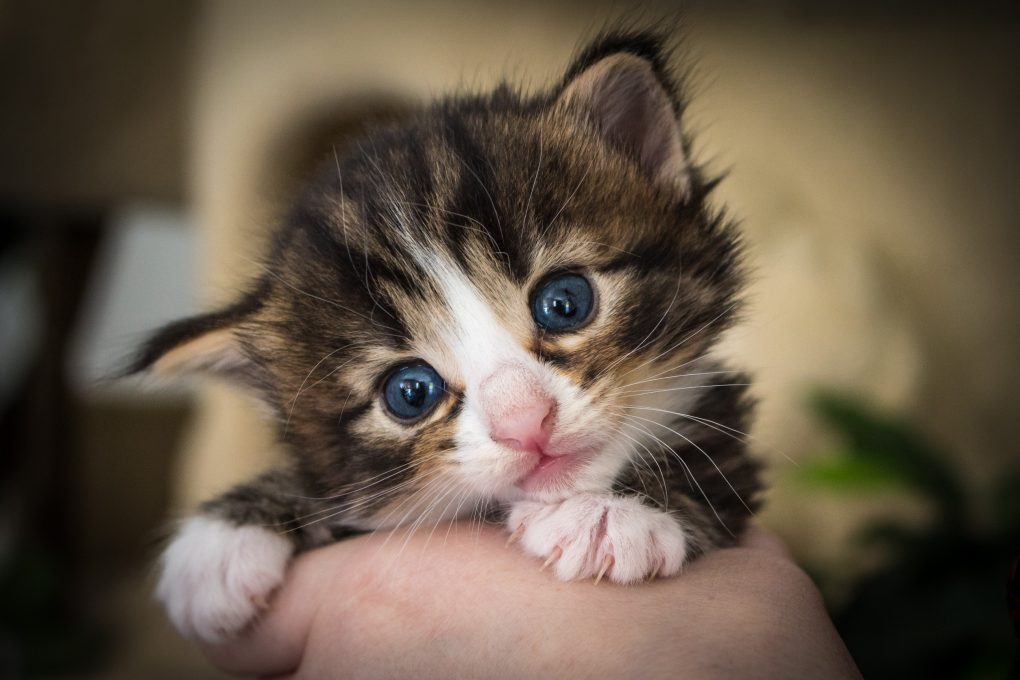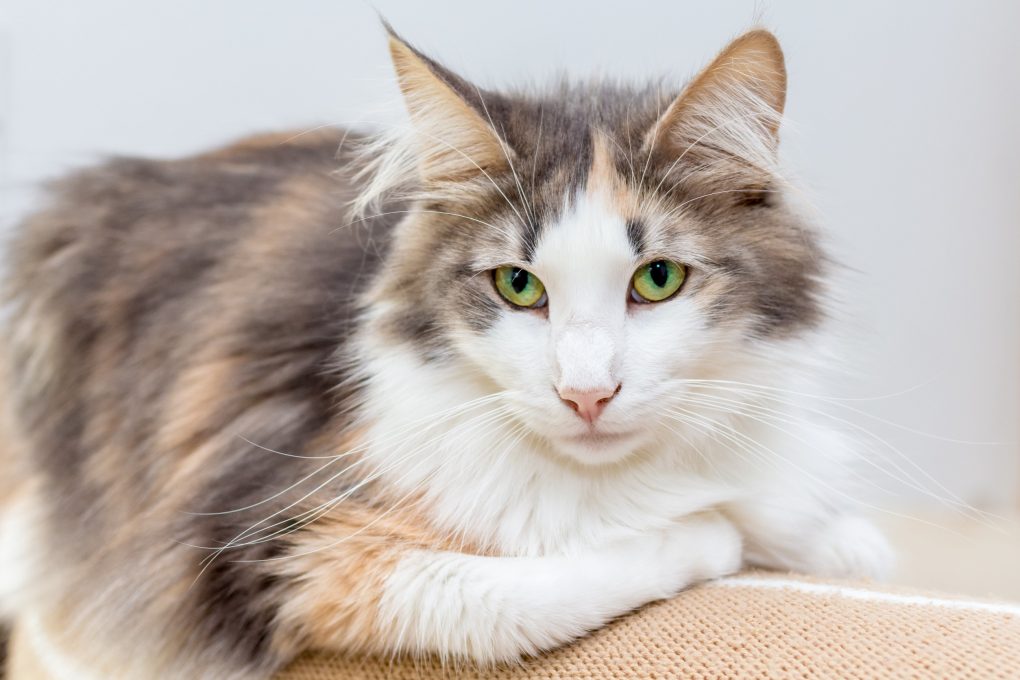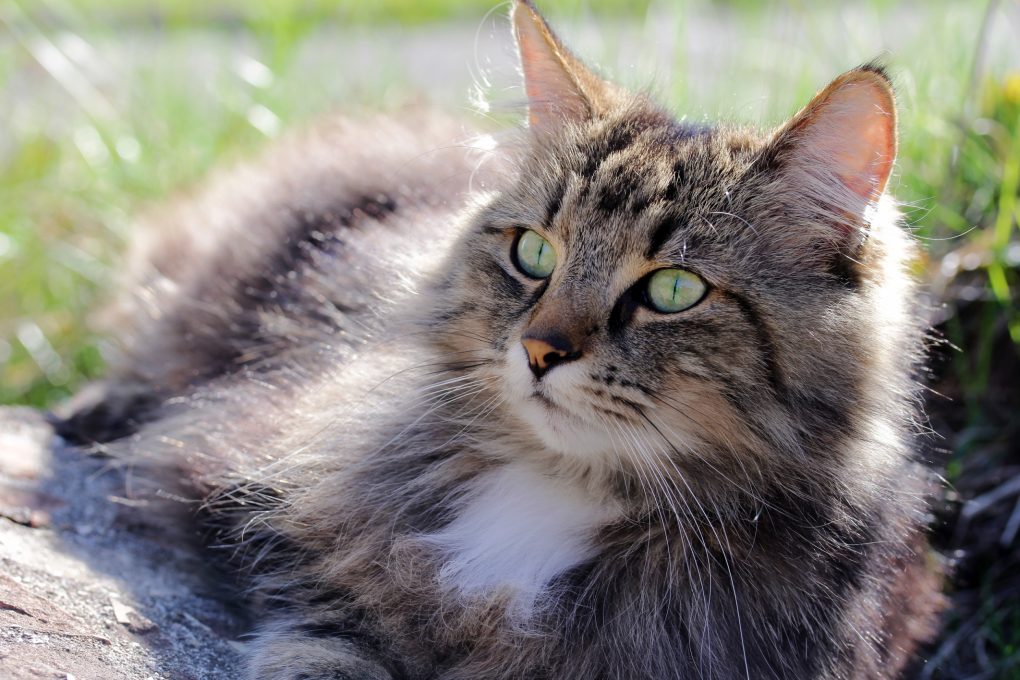How Much Does a Norwegian Forest Cat Weigh: Ways to Help Maintain a Healthy Weight in Norwegian Forest Cats
On average, a Norwegian Forest cat weighs between 12 and 16 pounds. However, the weight can vary depending on the cat’s size, gender, and lifestyle. For example, some Norwegian Forest cats can weigh more if they are larger or overweight.


Maintaining a healthy weight in Norwegian Forest cats involves a combination of a balanced diet and regular exercise. Some of the things you can do include feeding a high-quality diet, avoiding overfeeding, offering a variety of foods, monitoring food intake, encouraging exercise, and having regular veterinary checkups.
Table of Contents
How to Maintain a Healthy Weight in Norwegian Forest Cats
Feed a High-Quality Diet
A high-quality diet provides all the essential nutrients that your cat needs for optimal health, including protein, carbohydrates, fats, vitamins, and minerals. When your cat gets all the nutrients they need, they are less likely to overeat or crave unhealthy foods.
High-quality diets are more filling and satisfying than low-quality diets. This means that your cat will feel full and satisfied after eating a smaller portion of high-quality food, which reduces the risk of overeating and weight gain.
Also, high-quality diets are easier to digest than low-quality diets, which reduces the risk of digestive problems that can lead to weight gain. When your cat’s digestion works properly, they are more likely to absorb the nutrients they need and less likely to overeat or gain weight.
A good diet can help support your cat’s metabolism, which is how the body converts food into energy. High-quality diets are rich in protein, which is essential for maintaining muscle mass. When your cat’s metabolism works properly, they are more likely to burn calories efficiently. Also, when your cat has strong muscles, they are more active and burn more calories, which can help them maintain a healthy weight.
Offer a Variety of Foods
Offering a variety of foods to your Norwegian Forest cat can help maintain a healthy weight by providing nutritional balance and preventing boredom, which can lead to overeating. It ensures your cat gets a balanced diet that meets its nutritional needs. Different foods have different nutrient profiles, so by rotating foods, you can provide a wider range of nutrients that your cat needs to maintain a healthy weight.
Cats can get bored of eating the same food daily, leading to overeating or refusing to eat. By offering a variety of foods, you can keep your cat interested in their food and prevent boredom. This can reduce the risk of overeating and help maintain a healthy weight.


Offering a variety of foods can encourage your cat to develop healthy eating habits. For example, if your cat is used to eating different types of food, they are less likely to become picky eaters or overeat. This can help maintain a healthy weight in the long run.
Doing so can further provide mental stimulation for your cat. Cats enjoy exploring and discovering new things, so offering a variety of foods can provide your cat with a fun and interesting experience. This can help prevent boredom and overeating, contributing to a healthy weight.
Offering a variety of foods also allows you to customize your cat’s diet to their individual needs. For example, if your cat needs to lose weight, you can offer foods that are lower in calories, or if your cat has a food allergy, you can offer foods that do not contain the allergen.
Monitor Food Intake
Monitoring your cat’s food intake can prevent overfeeding, leading to obesity. By measuring your cat’s food and following feeding guidelines, you can ensure that your cat gets the appropriate amount of food for their age, weight, and activity level.
Portion control is important for maintaining a healthy weight in cats. By monitoring food intake, you can control how much your Norwegian Forest cat eats and prevent them from overheating. This can be particularly important if your cat is prone to obesity.
Monitoring food intake can also help you identify any feeding problems that your cat may have. For example, if your cat is not eating as much as usual, it could indicate an underlying health issue. By monitoring food intake, you can detect changes in your cat’s appetite and address any issues promptly.
Doing so also allows you to adjust your cat’s diet as needed. For example, if your cat is gaining weight, you can reduce its food intake, or if it is losing weight, you can increase its food intake. By making these adjustments, you can help your cat maintain a healthy weight.
Encourage Exercise
Exercise helps burn calories, which can be particularly important for cats that are prone to obesity. Regular exercise can help your Norwegian Forest cat maintain a healthy weight by burning excess calories. Exercise can also help increase muscle mass, which can help with weight management. The more muscle a cat has, the more calories they burn at rest.
Encouraging exercise has many health benefits for Norwegian Forest Cats and other cats, such as Persian cats. Both Norwegian Forest Cats and Persian cats benefit from regular exercise. It improved cardiovascular health, digestion, and mental health. By promoting overall health, exercise can help your Norwegian Forest cat maintain a healthy weight and avoid weight-related health problems.
Exercise can help reduce stress in cats. Stress can lead to overeating and weight gain, so reducing stress through exercise can effectively prevent weight gain. It can also provide mental stimulation for cats, which can be particularly important for indoor cats that may not have access to outdoor activities. Mental stimulation can help prevent boredom and overeating, which can contribute to weight gain.
Regular Veterinary Checkups


Regular vet checkups allow your veterinarian to monitor your cat’s weight and detect any changes. If your cat has gained or lost weight, your veterinarian can work with you to identify the cause and develop a plan to address it. Checkups also allow your veterinarian to identify any health issues that could be contributing to weight changes, such as hypothyroidism or diabetes, which can cause weight gain or weight loss.
Your veterinarian can also provide nutritional counseling to help you develop a diet plan that meets your cat’s needs. In addition, they can recommend high-quality foods that are appropriate for your cat’s age, weight, and activity level, as well as guide portion control.
Regular vet checkups allow your veterinarian to monitor your cat’s activity level and recommend increasing exercise or reducing sedentary behavior. They can also guide how to safely and effectively increase your cat’s activity level.
If your cat is overweight or obese, your veterinarian can work with you to develop a comprehensive weight management plan. This may include changes to your cat’s diet, exercise routine, and monitoring of its progress.
